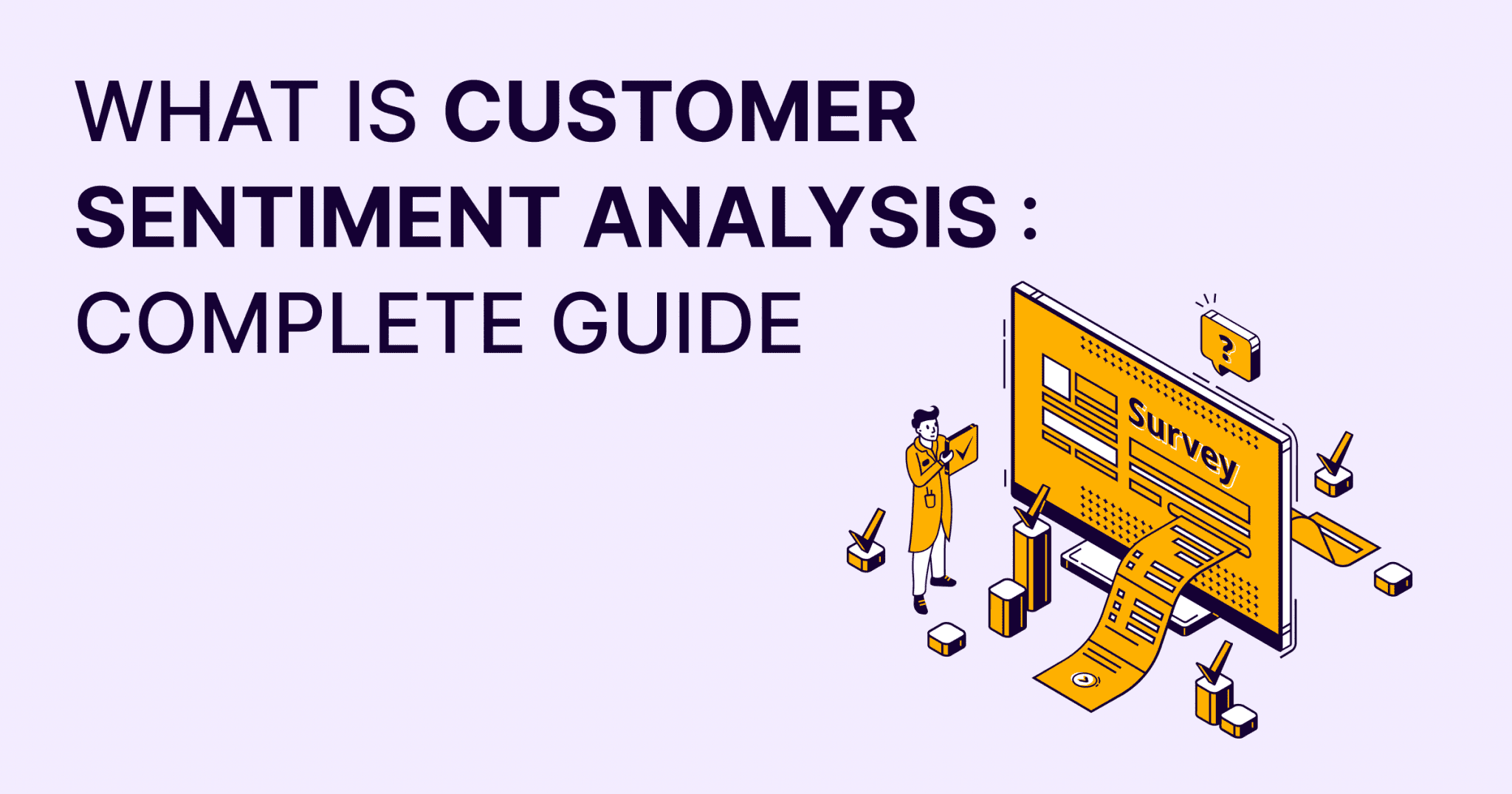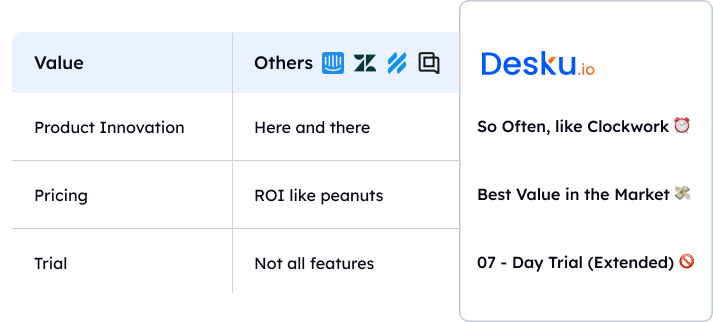Think about standing in a busy marketplace, trying to understand the overall vibe of the people around you. Now, apply that concept to your customers and their feelings towards your business, products, or services. That’s essentially what Customer Sentiment Analysis is.
It’s a key barometer of your brand’s reputation and perception. Now, you might be wondering, how do you gauge such a thing? Well, there are various smart tools and methods that can help you decode the emotions behind customer interactions, comments, and feedback.
The main question, though, is how do you use this valuable insight to better your business? Let’s chat more about this intriguing subject to get a better understanding.
Key Takeaways
Imagine being in a bustling market, attempting to grasp the overall mood of the people around you. Isn’t it fascinating? Now, picture doing the same with your customers to understand their feelings about your business, products or services. This is the essence of customer sentiment.
Customer sentiment serves as an important measure of your brand’s reputation and perception. You might be thinking, how can you measure this? There are several clever tools and methods available that can aid you in making sense of the emotions hidden in customer interactions, comments, and feedback.
The real question is, how do you use these precious insights to improve your business? Let’s have a relaxed chat about this fascinating topic to get a clearer picture.
What is customer sentiment?

Ever wondered how your customers really feel about your brand? That’s the essence of customer sentiment. It’s all about capturing the emotional wavelengths of your customers – from their joys and urgencies to their frustrations and disappointments. Their feelings, attitudes, and opinions about your brand can greatly shape their choices about your products or services.
You might be scratching your head, wondering how you can tap into this goldmine of information. Here’s the scoop: listen to your customers. Their feedback is like a goldmine offering precious clues about their experiences with your brand. If a customer is upset, perhaps they had a less-than-stellar experience with your product. On the flip side, if they’re pleased, chances are they had a positive encounter with your customer service.
Now, how do you make sense of all this feedback? Here’s where sentiment analysis tools come in handy. They help you break down feedback, quantify emotions from positive to negative, and give you a full picture of your customers’ feelings. By using this tool, you’re able to fine-tune your products and services based on the emotional temperature of your customers in real-time, taking their experience to the next level. So, understanding and measuring customer sentiment isn’t just a nice-to-have; it’s a must-have for your brand to thrive.
What is customer sentiment analysis?
Let’s chat about customer sentiment analysis, an effective method that helps us understand how customers feel about a brand. It’s like a compass, pointing us to the emotions of customers, whether they’re angry, frustrated, or overjoyed.
This tool can be your secret weapon. By understanding the emotional drivers behind your customers’ choices, which often are more about feelings than cold, hard facts, you’re better equipped to meet their needs.
So, how does one get a handle on customer sentiment? It’s about gathering and examining feedback from customers. This can be qualitative, like comments or reviews, or quantitative, like ratings or scores. This feedback can give you insights into how your brand is perceived overall, or how individual products or services are seen.
Benefits of customer sentiment

You know, getting a sense of how your customers feel is like having a secret key to their hearts. It gives you a peek into what they want and expect from your business. It’s like being one step ahead in the game, fixing problems before they can even affect your business.
And it’s not just about putting out fires. When you put your finger on the pulse of customer sentiment, you’re helping your team get better at dealing with unhappy customers. Plus, it’s a secret weapon for boosting customer loyalty, keeping them around longer, and turning them into your biggest fans.
And there’s more! Keeping an eye on customer sentiment can help you make your products and services even better. It’s like having a compass that always points to ‘exceeding customer expectations’. Now, isn’t that something?
1. You can better understand your customers’ needs and expectations
Imagine this: you’re using customer sentiment analysis to truly get to grips with what your customers need and want. It’s like having a direct line into their thoughts and expectations. It’s a game-changer for your business strategy and crucial for building solid customer relationships.
- Getting to Know Customer Needs: What do your customers want? What do they need? Analyzing their sentiment can give you the answers to these big questions.
- Meeting Expectations: You can use customer sentiment to find out exactly what your customers are hoping for. This way, you can provide a product or service that doesn’t just meet their expectations, but exceeds them.
- Building Stronger Relationships: When you know your customers’ sentiment, you can strengthen your relationships with them. This leads to increased loyalty and even better, it keeps them coming back for more.
- Making Smart Improvements: The info you get from analyzing customer sentiment? That’s gold. Use it to make strategic improvements to your product, service, or the way you interact with customers.
2. You can resolve problems before they affect your bottom line
Keeping a regular check on what your customers feel about your services or products can help you spot and address issues in advance, before they eat into your profits. When you understand your customers’ feelings towards your business, you can quickly take action to sort out any concerns they may have. This way, you can stop any potential loss of revenue dead in its tracks.
Being proactive in this manner allows you to find any big problems hiding in your customer sentiment data and fix them before they balloon into something bigger that can affect your sales. These advance actions show your customers that you’re serious about their satisfaction, which is key to keeping them loyal to your business.
Use tools that can provide you with immediate feedback to accurately gauge customer sentiment. This way, you’re always in the loop about how your customers feel about your business. In short, understanding and acting on customer sentiment is a mighty tool for solving problems, keeping customers, and ultimately, achieving financial success.
3. You’re able to better train your staff to handle dissatisfied customers
When it comes to training your team, customer sentiment data can be a game-changer. This isn’t about just putting out fires or calming disgruntled customers. It’s about taking a step back, looking at the bigger picture, and using that insight to really make a difference. Here’s how:
- Create specific training sessions that zoom in on those areas you know need some work.
- Give your team the know-how and the tools to deal with unhappy customers in a successful way.
- Transform less than ideal customer experiences into good ones, which can really help keep customers loyal to your brand.
- Promote a culture where learning and improving never stops, and it’s all based on real feedback from your customers.
This approach isn’t just about soothing unhappy customers. It’s about learning from their feedback and using those insights to boost the skills of your team, improve the quality of your services, and ultimately, increase your profits.
4. Increase customer loyalty, retention, and advocacy by focusing on customer sentiment
Think about this – what if you could transform your business by simply paying more attention to how your customers feel? You know, really getting into their heads, understanding their likes and dislikes, and then adjusting your strategy to cater to their needs. Sounds like a plan, right?
Well, it’s not just a plan, it’s a proven strategy. When you put your customers’ feelings at the forefront of your business decisions, you’ll see a significant shift in their loyalty and retention rates. Not only that, but they’ll start to become your biggest cheerleaders, spreading the word about your brand and bringing in new customers.
The best part is, your customers will feel valued, seen, and heard. They’ll know that their opinions matter to you. This kind of positive interaction can turn your average customer into a loyal fan.
But what about negative feedback, you ask? Well, that’s just as valuable. When you take the time to address any issues, you show your customers that you’re committed to providing the best experience possible. This kind of proactive approach can help you keep more customers and reduce the number who leave.
5. Improve products and services by monitoring customer sentiment analysis
Using customer sentiment analysis can seriously boost your offerings, aligning them more closely with what your customers are really after. Here’s how it can help:
- Spotting patterns in problems can help you figure out what needs fixing first, and what improvements can wait.
- You’ll get a much clearer picture of who your customers are and what they’re looking for.
- If there are things your customers aren’t happy about, you’ll be able to get to the heart of the issue and make things better.
- Customer turnover could drop, and you might find more chances to make sales.
So, you see, it’s not just about crunching numbers and data. It’s about understanding your customers’ feelings towards your products or services and using that knowledge to make them even better.
It’s about making your customers feel heard and valued, and ultimately, it’s about enhancing their experience with your brand.
6. Personalize and enhance customer interactions with customer sentiment analysis
In our tech-savvy era, it’s essential to tap into the power of customer sentiment analysis to make your customer interactions more personalized and efficient. This strategy helps to get a better grasp on the feelings and viewpoints of your customers. By doing so, you’re in a better position to streamline customer experiences by spotting recurring problems and effectively managing support requests. The sentiment scores are a crucial part of this, aiding in reshaping your support team’s training for more bespoke interactions.
Interestingly, taking customer sentiments into account can turn a significant portion of your customers into returning buyers. But it’s not just about that. By looking at sentiment data, you can pinpoint unhappy customers for follow-up, which can lower the number of customers leaving and boost sales prospects. So, in the end, customer sentiment analysis doesn’t just improve chatbot efficiency, it also strengthens customer loyalty to your brand.
How to measure customer sentiment
Getting a handle on what your customers think and feel about your brand is super important for your success. You can use helpful tools like customer support software, keeping an eye on social media chatter, checking out ratings on your app or website, and listening to what your customers are telling you (this is often called Voice of the Customer, or VoC, programs) to get a full picture of customer sentiment.
Don’t forget, sometimes just asking your customers directly for their thoughts can be the most effective way to go.
1. Customer service support software
Think about how amazing it would be if you could gauge your customers’ emotions and understand how they’re affecting your business. With customer service support software, this dream can become a reality. This smart tool uses algorithms to analyze the language used in customer service chats and then gives a customer sentiment score, ranging from one to 100.
Now, you might be wondering what benefits this brings. Let’s talk about that:
- Routing Tickets: This software is like a traffic controller for your customer service tickets. It uses the sentiment score to direct tickets efficiently.
- Spotting Issues: The software is like a detective, finding common problems that keep cropping up. This allows you to get ahead of these issues and solve them before they become bigger problems.
- Better Training for Your Team: Think of the sentiment analysis tool as a personal coach for your team, offering insights that can help improve the way you handle customer service.
- Personal Touch: The real-time sentiment analysis is like a sixth sense for your team, alerting them when a customer might be feeling stressed or angry. This allows your team to tailor their interactions and respond in a way that shows they truly understand the customer’s feelings.
2. Social media monitoring
Social media monitoring tools like Hootsuite and Sprout Social are quite handy, don’t you think? You can keep an eye on what your customers are saying and feeling about your brand by using these tools. They use keyword and sentiment analysis to check if a post is positive, negative, or neutral. It’s like having a magnifying glass on your customers’ thoughts!
By keeping tabs on social media comments, mentions, and reviews, you get a firsthand look at how people perceive your brand. It’s like eavesdropping on a conversation about you, but in a good way! Also, these tools have a knack for understanding customer emotions. How, you ask? By looking at the emojis they use, the hashtags they put, and even their language patterns.
If you see some negative feedback, don’t sweat it. Take it as an opportunity to improve. Trust me, your customers will appreciate it. So, in a nutshell, keeping an eye on social media is a pretty important part of your strategy to gauge and improve customer sentiment. Don’t you agree?
3. In-app and website ratings
Let’s chat about the importance of in-app and website ratings. They’re like a window into your customers’ minds, showing you how they feel about your services.
First up, we’ve in-app ratings. It’s like having a direct line to your users, right within the app. They can tell you exactly how they’re feeling about the experience, and this feedback is incredibly valuable.
Next, we’ve got website ratings. These are left by customers who’ve interacted with your website. Checking out these ratings can give you a pretty good idea of what your customers are thinking.
Now, let’s talk about trends. Over time, these ratings can change. Keeping an eye on these changes can help you understand whether your customers are feeling happier or less satisfied with your services.
4. Voice of the customer (VoC)
In the fast-paced business world we live in, getting to know the ‘Voice of the Customer’ or VoC, is crucial if you want to know what your customers really think. VoC is all about gathering customer feedback – this could be through surveys, interactions on social media, or even customer service calls. The aim is to understand the emotions, tone, and intentions behind their feedback.
How do you make sense of all this information? That’s where tools like the Net Promoter Score (NPS) and Customer Satisfaction Score (CSAT) come in handy. They’re key parts of VoC programs and help you interpret customer sentiment effectively.
5. Elicit direct feedback
Getting feedback directly from your customers is a really great way to find out how they feel about your business and how you can make your products or services better. There are a few ways you can do this:
- Surveys: Surveys are a great way to get a lot of data at once. They can help you understand things like how satisfied your customers are, how loyal they are, and whether or not they’d recommend your business to others.
- Social Media Interactions: Keeping an eye on what people are saying about your business on social media can give you a real-time look at how your customers feel about you.
- Comment Cards: If your business has a physical location, comment cards can be a good way to get immediate feedback from customers about their experiences.
- Contact Center Conversations: Talking to your customer service team can also be a great way to find out how customers feel about your business.
Best tools for customer sentiment analysis
If you’re keen on understanding your customers’ feelings about your business, I’ve got a few suggestions for you. Have you heard about Sprout Social or Lexalytics? They’re pretty neat.
Then there’s Userpilot, Survicate, and Qualaroo, each with its own set of cool features. They all help you gather, examine, and put to good use the invaluable feedback your customers share.
It’s like having a window into your customers’ minds, isn’t it?
1. Sprout Social
Sprout Social is a fantastic resource when you’re trying to really get a grip on how your customers feel about you. It’s about more than just seeing if people like your product or not – it’s about understanding their emotions, their opinions, and their overall sentiment towards your brand. So how does it do all this?
Well, it starts by keeping an eye on social media. It’s always listening, picking up on what people are saying about you. Then it analyses these conversations, figuring out whether the general feeling is positive, negative, or somewhere in the middle.
But it’s not just about understanding – it’s about action too. Sprout Social gives you the insights you need to tweak your business strategies. It’s about taking what your customers are saying and using it to make your business better. And when you do that, you’re not just improving customer satisfaction – you’re building loyalty too.
2. Userpilot
Userpilot is a standout tool, known for its impressive ability to analyze customer sentiment. If you’re looking for top-of-the-line tools to understand your customers better, Userpilot is a solid choice. Here’s why:
- It’s all about measuring sentiment: Userpilot uses state-of-the-art methods to gauge sentiment across different customer interactions. This gives you a deep understanding of how your customers are feeling and their attitudes towards your product.
- Making customer experiences better: Userpilot is designed to help you understand what your users think about your products. This can guide you in fine-tuning your offerings to better match what your customers want and appreciate.
- Keeping an eye on sentiment changes: One of Userpilot’s cool features is that it lets you see how sentiment changes over time. This is great because it means you can quickly adapt to changing customer needs.
- Perfecting user journeys: Understanding customer sentiment lets you fine-tune user journeys. This can lead to happier customers overall. In the dynamic world of customer sentiment analysis, Userpilot is a reliable choice to keep you on top of your game.
3. Survicate
Looking for a handy tool to understand how your customers feel about your business? Give Survicate a whirl. This powerful tool is chock-full of great features like feedback surveys, NPS scoring, and real-time feedback collection from a variety of channels.
What’s the best part? The platform is tailor-made to suit your needs, making it a breeze to capture and analyze customer sentiment effectively. With Survicate, you can easily keep tabs on changes in sentiment, pinpoint issues that bother your customers, and take steps to make them happier.
But here’s the kicker – this tool gives you real-time insights. This means you can make decisions based on up-to-the-minute data that can improve customer sentiment. And the icing on the cake? Survicate gathers customer feedback from a host of sources, giving you a bird’s eye view of how your customers feel.
4. Qualaroo
Looking for a reliable way to really get a pulse on your customer’s feelings? Look no further than Qualaroo. This top-notch customer feedback tool is well-known for its ability to collect and interpret customer sentiment data.
- Types of Surveys: Qualaroo comes with a variety of surveys, including NPS, CSAT, and CES. These help you accurately measure customer satisfaction and sentiment.
- Instant Feedback: With Qualaroo, you get instant access to customer sentiments. This allows you to respond quickly and effectively.
- Informed Decision Making: Qualaroo’s detailed analytics enable you to make decisions based on solid data, improving your business strategy.
- Spotting Trends: This tool is great at detecting trends, preferences, and pain points from customer feedback, helping you make specific improvements.
Go for Qualaroo if you’re looking to understand and respond to your customer’s emotions and views about your brand.
FAQs about Customer Sentiment Analysis
What is client sentiment analysis?
Client sentiment analysis or Customer sentiment analysis is the process of analyzing and understanding the opinions, emotions, and attitudes expressed by clients or customers towards a product, service, or brand. It involves evaluating and categorizing customer feedback to determine their overall sentiment, whether it is positive, negative, or neutral.
How do you determine customer sentiment?
By analyzing text data using natural language processing techniques, sentiment analysis algorithms can determine the sentiment expressed in customer feedback or reviews.
What is a good customer sentiment score?
A good customer sentiment score reflects positive sentiment towards a product, brand, or service. It indicates that customers have a favorable opinion and are satisfied with their experience.
What is sentiment analysis with example?
Sentiment analysis is the process of determining the sentiment or emotion expressed in a piece of text. It involves analyzing the text to understand whether the sentiment is positive, negative, or neutral.
Example:
I absolutely loved the new restaurant. The food was delicious, and the staff was incredibly friendly and attentive.
In this example, the sentiment is positive as the text expresses satisfaction and enjoyment.













